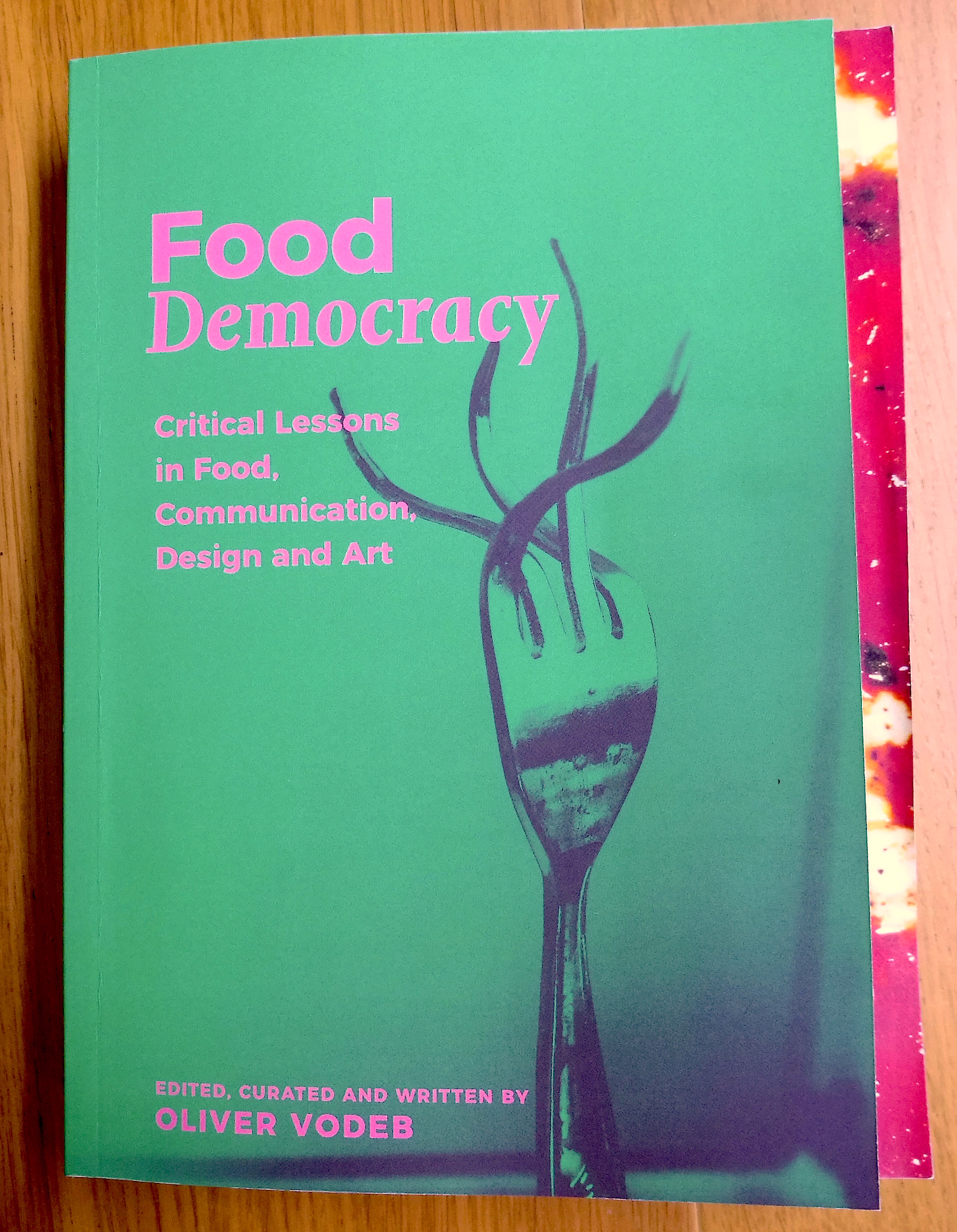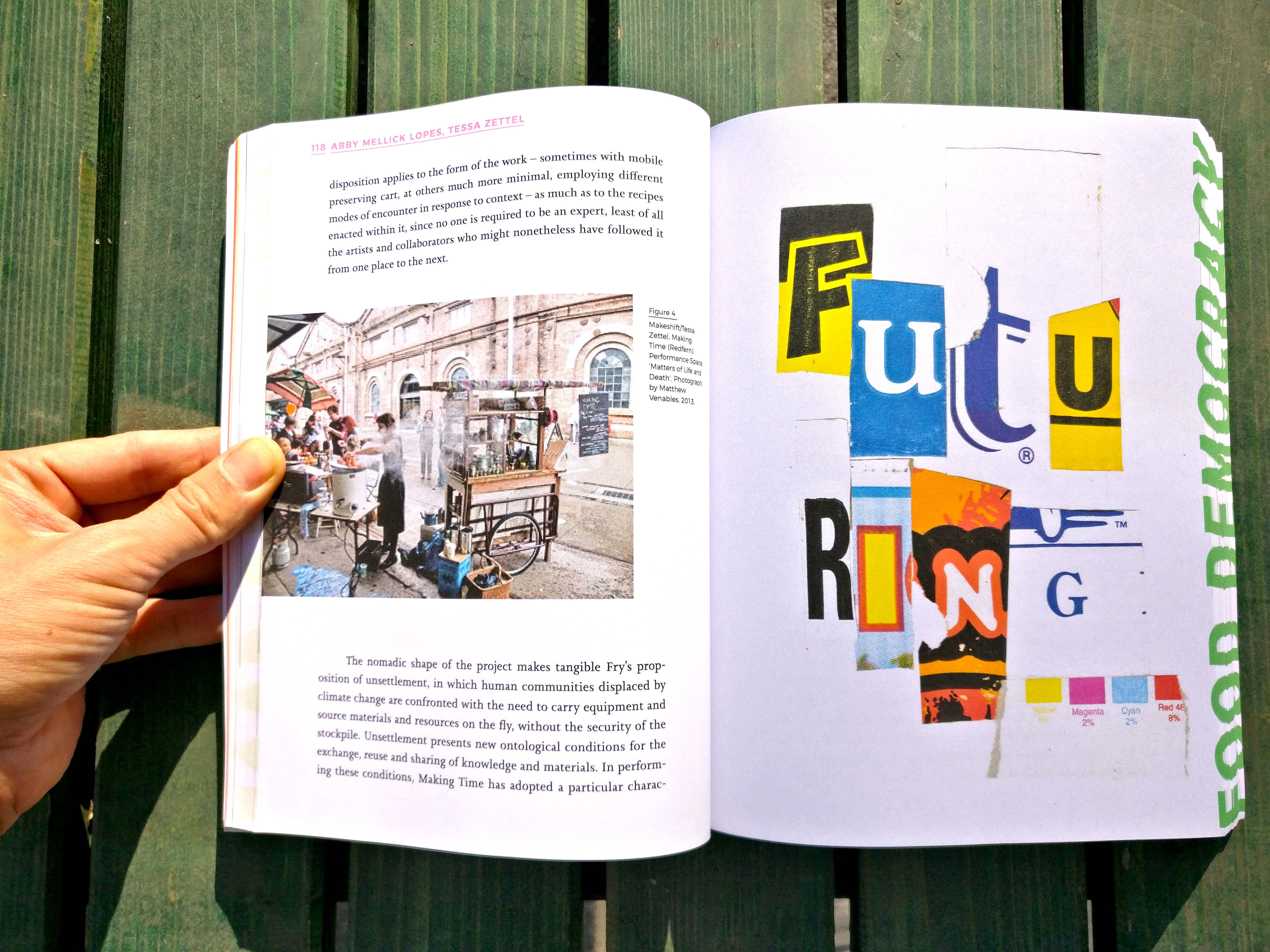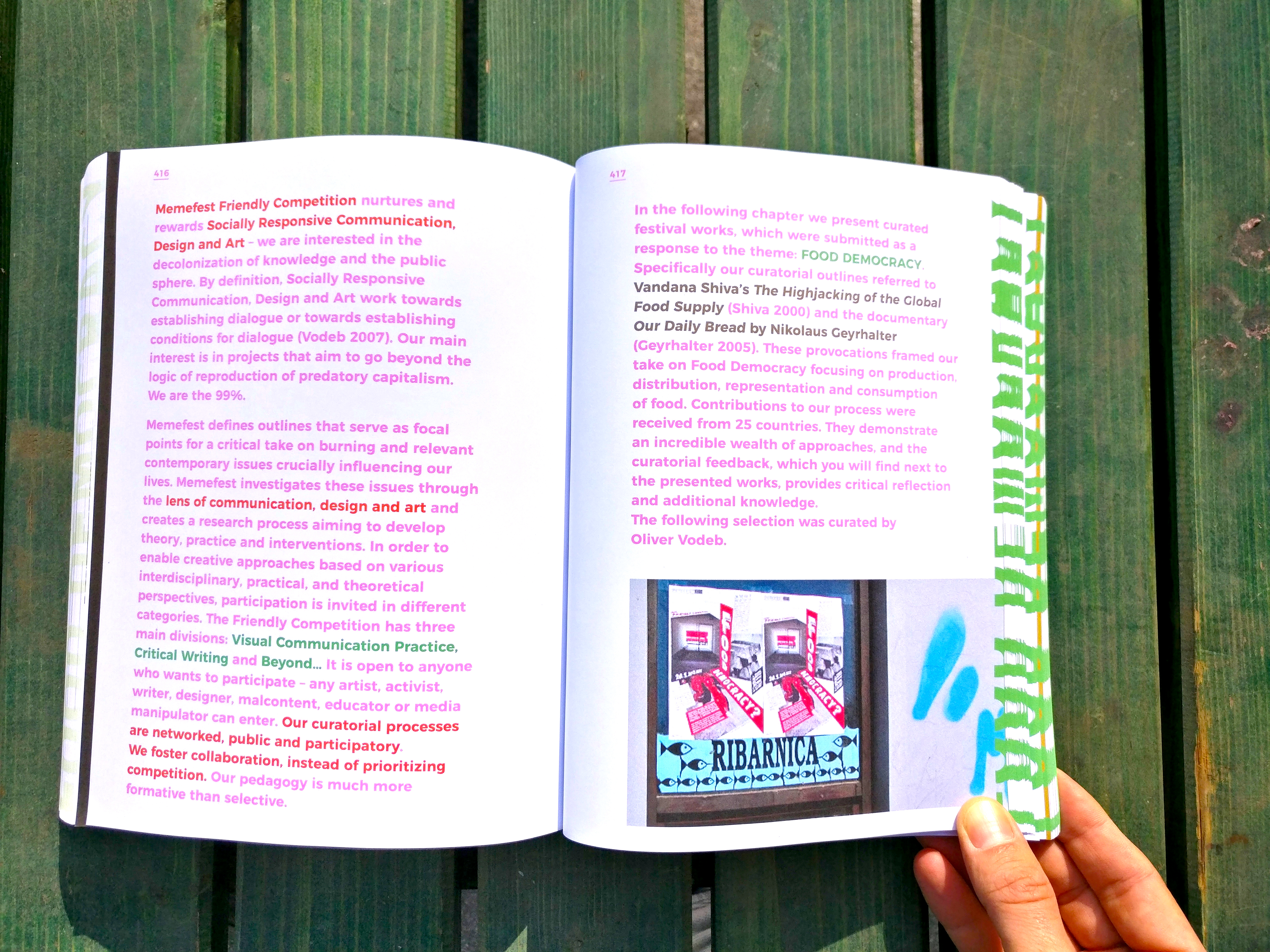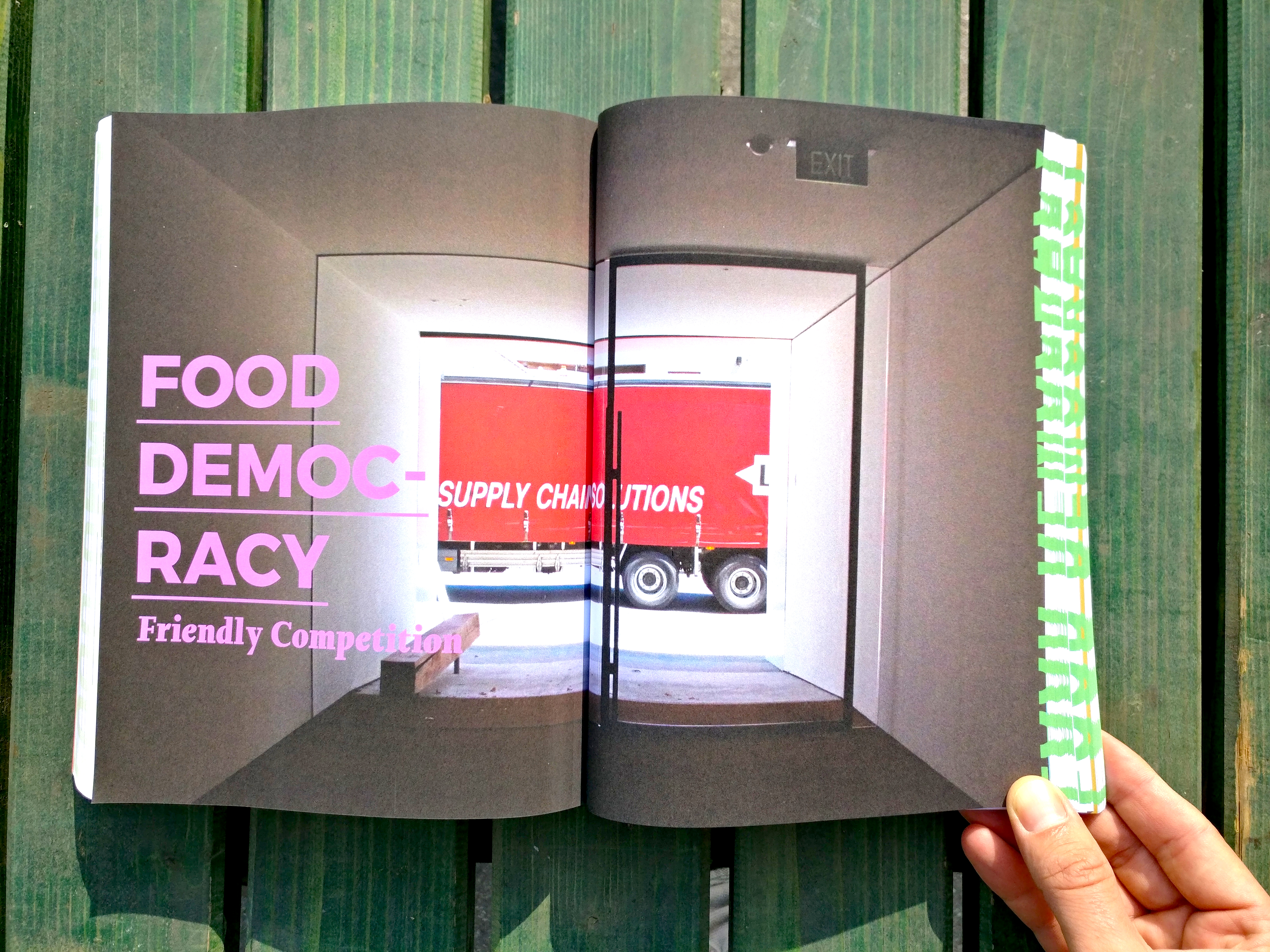FOOD DEMOCRACY BOOK: ON PLEASURE PRAXIS AND OTHER THINGS


As part of the Food Democracy book promotional activities done by Swinburne University, bellow is a conversation between Belinda Stening and Oliver Vodeb.
We worked hard to keep the price of the book low. BUY THE BOOK HERE OR HERE- check what works better for you.
*****
What prompted you to create Food Democracy?
I am mostly developing research around what I call socially responsive design and I look at design highly inter/extradisciplinary. My research is in this context focused on what I call urgent and burning issues in times of radical uncertainty and environmental degradation. I am interested in designs role in these issues, how it contributes to a rather problematic state of the world and how can it contribute to a change towards a more socially equal, just and environmentally sustainable society. I became very interested in designs relation to social instruments of control, exploitation, and dominance - colonization. My previous book was dealing with debt as an instrument for social control and it explored designs role in it. The research we have done on debt with the Memefest network in previous years has led us to food, and when looking at it closer it became clear that food is one of the most fundamental areas defining our human condition. While there is an emerging sub discipline of food design, critical, experimental, speculative and above all radical and inter/extradisciplinary research on designs relation to food is missing. Our research fills this gap and addresses design issues largely from the perspective of communication. The three-stage methodology, developed at Memefest and the particular research culture produces quite unique research insights and impacts. Considering the importance I felt a responsibility to engage with the relation of food and design.
What's it about?
Food Democracy looks at food systems defined by production, distribution, consumption and representation and asks the question how can we think and create what I call socially responsive design, communication and art that counters the role of the food industry as a machine of consumption. The food systems are largely taken over by corporations and operate at the expense of people and our natural environment. The book develops a fairly radical critique and at the same time proposes new alternative socially responsive models and strategies both on levels of theory and practice. It is also a book, which is as relevant to academics as it is to professionals in design, advertising and other related areas. It also includes unique cooking recipes, which when practiced will make the reader understand the arguments in the book on a deeper level.
What are the most compelling aspects of Food Democracy as an issue?
In my opinion food is a key medium for domination by the 1% of the super rich and powerful. This can only be possible with a food system, which is non democratic. People’s participation in it is very limited or non-existent. What is at stake is nothing less that our survival. At a rapidly growing population and a billion of starving people, at a rising number of food and water refugees because of global warming and unsustainable farming practices, with food being designed as high addiction drugs and food advertising selling food as drugs– to name just a few things, design has its finger prints all over. The fact that design contributes so much to such a state of our food ecologies shows designs role as a technology of defuturing. The question we are asking is how to use design to turn things around, our answer is that we should steer our research towards innovating design, which will work outside and as an alternative to the dominant forms. Changing design education is part of it. The concept of food democracy is a powerful and holistic argument for an alternative.
Can you please explain what you mean by "dominant corporate forms?
Corporations largely govern the food system, which is operating within a capitalist ideology defined by irrational short - term profit. These systems are such by design and part of the design is that they strive to marginalize alternatives. The dominance is in my opinion largely sustained because the food systems are backed by billions of dollars, the corporate media, design and advertising, and the majority of design education, which is largely reproducing design as a technical skills centered service providing activity.
Among other things Food Democracy introduces a theory of pleasure praxis. What is pleasure praxis?
I have coined the term and developed the theory of pleasure praxis to explain the creative, critical and emancipatory potentials of pleasure in relation to design. I do understand praxis as the activity where man becomes subject and object of his being. I think that what has been missing so far in thinking about praxis is the pharmacological aspect, because it crucially defines our lives and it is this aspect which is a big part of the theory of pleasure praxis that I am developing.
Design is at the very core connected to pleasure, mostly however to achieve pleasurable experiences when using commercial products or services. The user experience in this sense is rather subordinated to the commercial goal. That can be all nice and fine, but I think pleasure, considering that (in a very Freudian sense) is one of the central drivers defining human behavior (we strive for pleasure and the absence of pain or non- pleasure), can be practiced with agency and used for social change. With pleasure praxis I have introduced the pharmacological aspect to pleasure in relation to design. The pharmacological aspects of pleasure praxis connect food and pleasure through the extended understanding of the concept of drugs, and the relations to various aspects of food cultures. Further to this, pleasure praxis seeks design, media/communication, art, avant- garde, critical and public sociology and especially acts of ordinary intelligence and everyday knowledge. I extended it as an intellectual practice outside of the sphere of only professionals, including academics. With this I mean that pleasure praxis is something that can be also practiced by non - specialized publics, like the amateur. The meaning of the word amateur is “one who loves” or “doing things for the sake of pleasure.” The reason for this is because the professionalization of knowledge has turned it largely into a quantifiable activity focused on generating money and not into activity practiced for the love of it. The results of our activities are depending on the culture of engagement very different. In this sense I partly advocate for the amateurisation of design research and knowledge production and a radical return of pleasure.
How is advertising selling food as drugs?
Advertising sells food, which has been designed as drugs in order to be addictive. Think about potato chips or “cheesy crust pizza”. Advertising also sells food in ways of representations, which resemble behavioral patterns we know from illicit drug cultures. Think of ads with kids lying to parents or stealing in order to get their sugar rush.
How can food design make us think?
The world population is on one hand being largely governed by screen -based technologies, which destroy attention. Our attention is becoming shallower, more dispersed and our attention spans shorter. These technologies are also designed to produces dependencies, addictive behavior. Media can make people “high”. On the other hand large parts of the world population eat food, which hinder cognitive activities and contribute to states of anxiety and depression, attention deficit or create particular states of “high”. Effects of high processed sugar have been linked and compared to effects of cocaine for example. Food design needs to be understood holistically and as much food and food cultures, media and technologies are largely used to design a passive consumer, as much food design can be used to emancipate active citizens. Food Democracy provides examples for that.
Why do we throw away some 40% of perfectly good fruit and vegetables at harvest?
Because of the role of design, the image of food projected by advertising and the standardized aesthetisation of food. Supermarkets, which are our largest source of fruit and vegetables actively foster such culture. Even at food markets we can see standardized looking fruit and vegetables.
Why are there fewer and fewer shops, but more and more restaurants and bars in our cities?
We are witnessing this development because people strive for genuine and especially personal and physical relations and interactions in the non-virtual space. Food, because of its various pleasure aspects is the perfect medium for this and this development is a counter development to our dependency to screen based technologies, social media and such.
How does Food Democracy relate to your research at Swinburne?
My research is an explicit contribution to socially responsive design and it is research that develops a model of radical inter/ extradisciplinarity of design. It contributes to a deeper understanding of theories and practices of critical communication design, systems and service design and the sub-discipline of food design. The inter/ extradisciplinary aspect of design in this context connects mostly to media and communicaitons studies and art, as well as knowledges produced by marginal, critical cultural postions in society.
Who collaborated with you on the publication?
The book is a result of almost five years of work and the involvement of more than 200 people with very diverse backgrounds from twenty-seven countries. I am indebted to all of them and especially to the Memefest network. I would also like to thank Griffith University- my previous University, which suported large parts of this research and Swinburne Center for Design Innovation, especially its funding director Kurt Seemann for his important support of the research process leading to this book.
*****************
From the contents
Table of content and Introduction to the book
We worked hard to keep the price of the book low. BUY THE BOOK HERE OR HERE- check what works better for you.
For images, a video and more of the books, check this link: http://memefest.org/en/fooddemocracy/




To comment, please create a Memefest account, it will take you only 2 minutes! Login here if you already have one.